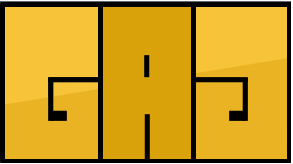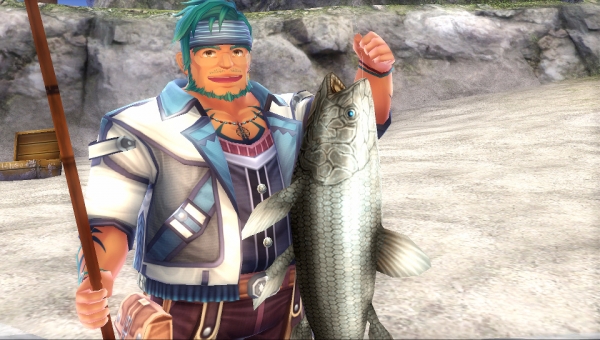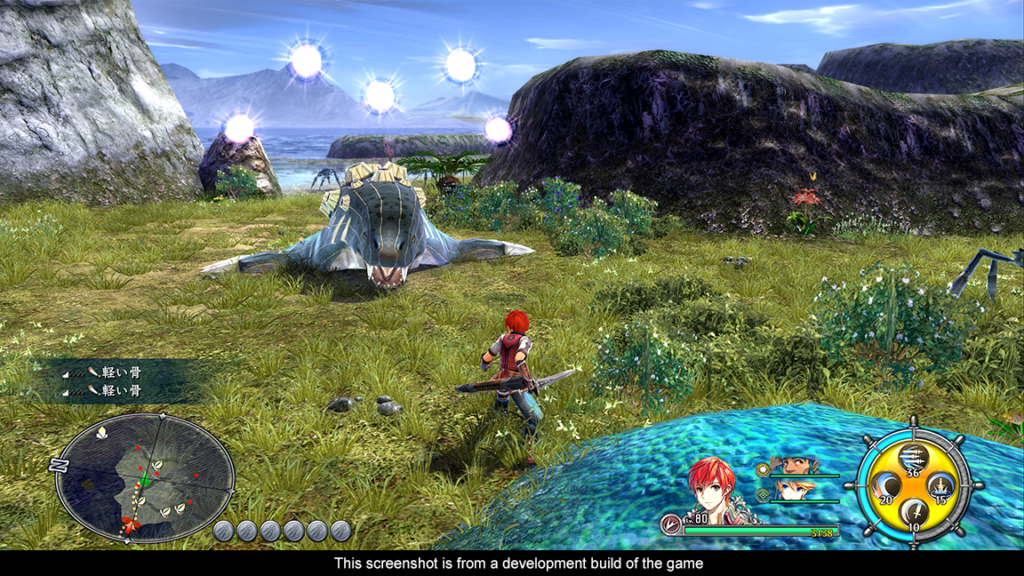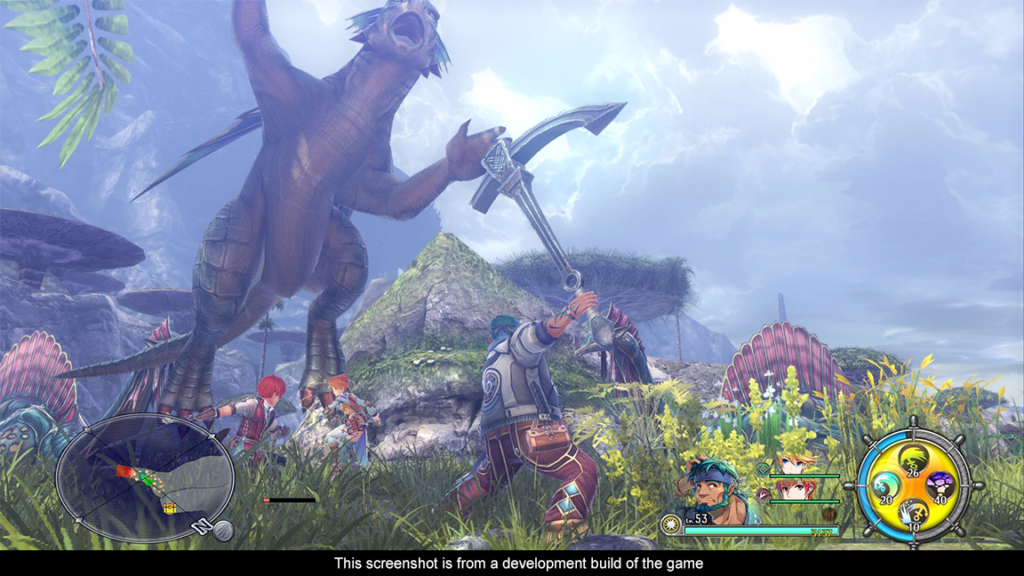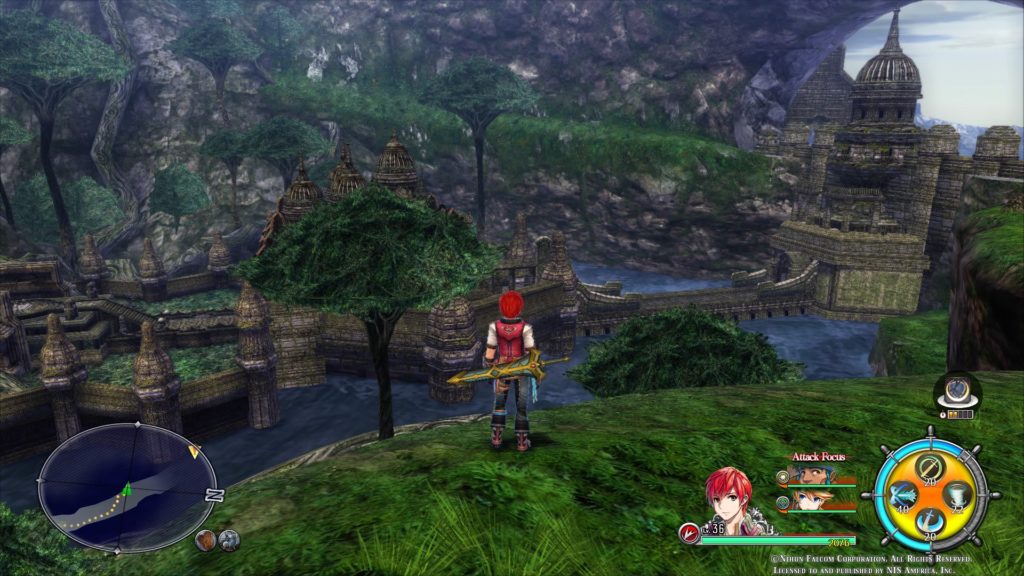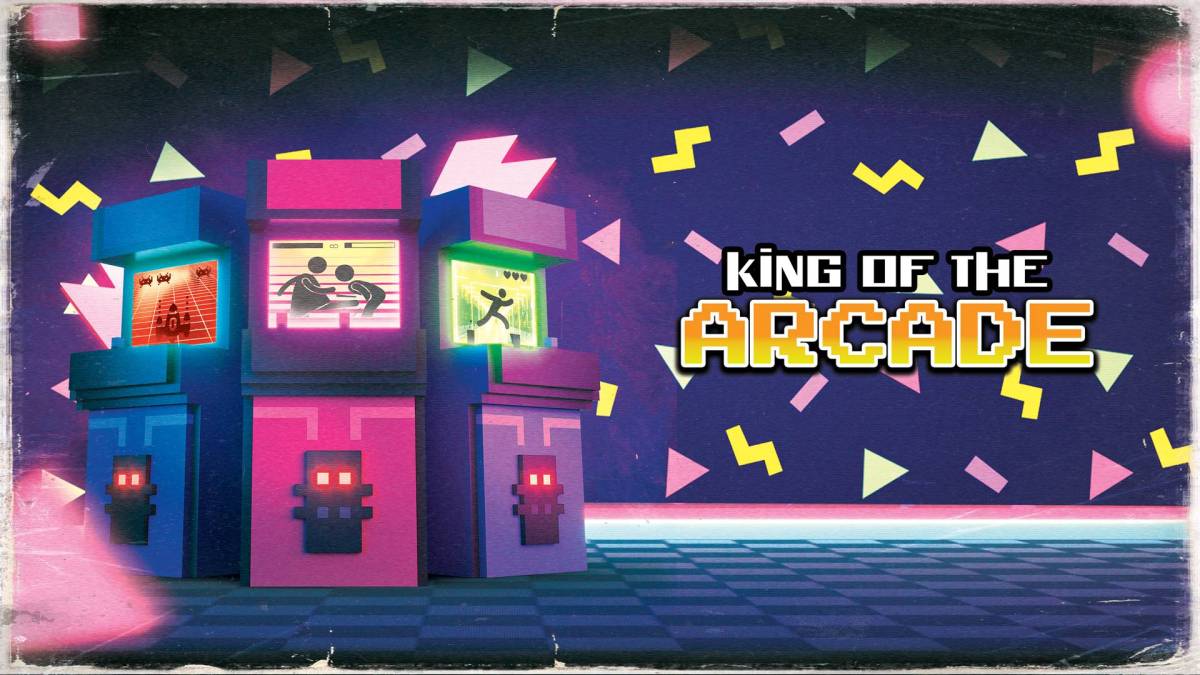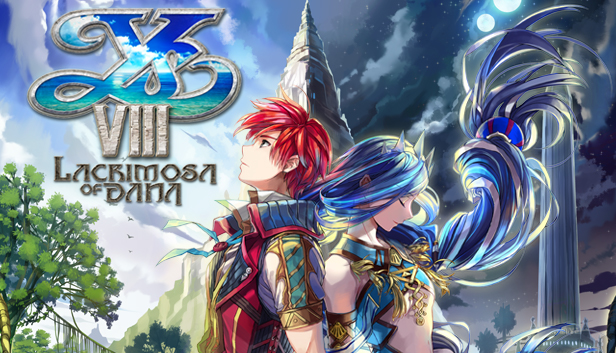
Platforms: PlayStation 4 (reviewed), Vita, and Windows
Ys VIII: Lacrimosa of Dana is the latest entry in the now 30 year old series. If you’re unfamiliar, Ys is an action-RPG series that’s largely known for its snappy combat and kickass soundtracks. While this is Ys’ first step into 3D, Falcom has had experience in making 3D worlds before, but they’ve never made anything that requires quick camera control in 3D before. The odds were more than stacked against Falcom in taking this series into the third dimension, but it seems like time with other games in 3D has served them well in this treatment of Ys.
Adol Christin, the series’ main protagonist, takes a boat trip with his friend and adventuring companion, Dogi. Fans of the series know that Adol and the ocean are a mixture that never leads to anything resembling a safe journey. Once he comes to, he finds he’s washed up on Seiren Island and, of course, the native species just see a meal with a bright red shock of hair. It all starts out familiarly enough, but Adol’s hero journey is a bit different this time. Rather than immediately finding out he’s the hero of legend, the first thing that needs to be taken care of is just finding a way to survive on this island. Finding some other passengers and crew members of the Lombardia, the ship that was doomed the moment a certain someone set foot on it, Adol helps band them together to form a village to help take care of one another and find a way to get off the island. While the plot starts out simply enough, it takes some abrupt, rather dark turns. People will be people, even in a game that plays off of anime stereotypes, so of course there are some castaways that just aren’t going to play nice.
Adol, as he takes his party to scout out the island, will be plagued by dreams of someone named Dana. Eventually you end up taking control of Dana in certain parts of the game. I won’t ruin the twist, but it’s nothing particularly surprising as it builds up gradually enough and you’ll be able to see it coming before it happens. It’s something a bit obvious, but it’s handled well enough. As simple as it might be, I still wanted to see it through to the end, even as Adol transitions from the more interesting scrappy survivor to what equates out to being, once again, a hero of legend. While I can’t think of an Ys story that’s been bad, it’s not something I come to the series for, so the simplistic nature of the narrative wasn’t something I found off-putting. It does what it needs to to keep you moving forward, and that’s all I really ask for in this series.
The cast of characters aren’t wildly interesting, but no one is aggressively obnoxious either. If you’re familiar with anime and manga, you’ll see nearly every stereotype represented here. Some of the banter between them can be enjoyable. Sahad, the big burly sailor acting as Dogi’s stand-in in your party, is more than a bit blunt and serves as the comic relief of the group. His personality was charming enough, if a bit simple, that I was happy to keep him in my party throughout the game.
The thing I keep coming back to Ys for is the combat system. Falcom has made it one of the pillars in the series and this entry might be the strongest and snappiest one to date. Continuing the trend that started in Ys Seven, there’s a bit of a rock-paper-scissors mechanic to the type of damage your characters deal. Some enemies have a weakness to either slash, pierce, or crush damage, barely being affected when attacked by anything other than their weakness, so you can’t just simply rely on Adol hacking through everything throughout the game. Do enough damage to these enemies with the attack type they’re vulnerable to and you’ll break their defenses, allowing your other party members to deal regular amounts of damage to them.
You can have a party of three active members and eventually get three others that you can swap between. You’ll end up with two characters of each attack type, giving you some options if you end up not being fond of someone in particular. Out in the field and in dungeons, a simple button press will flip you to the next active party member, making running into enemies strong against your attack type something you can take on without needing to go into a menu to swap out someone. If you don’t want to build a party around having one of each of the attack types, the two characters you have of the same type will get a bonus in the amount of damage they deal.
If one of your characters should fall in combat, as long as you’re not in a boss fight, you can pop into the menu to swap them out to one of your backups, allowing you to keep your party with three members. It’s a nice conceit to just how tough Ys VIII can be at times. This helps keep the exploration moving forward, largely negating the need to retreat to the nearest crystal when someone goes down when going through new areas. Party members on the sideline will also gain experience at a slightly reduced rate when not in combat. It’s enough to at least keep them competitive if you end up in a situation where you need to swap them in, but, unless you take the time to level them, you’ll find they’ll have just enough survivability to get you to the next warp crystal to heal up your main characters. Don’t expect to be able to take on hordes of whatever new enemies dropped one of your main party members.
You’ll unlock skills as you go through your journey, allowing you to do extra damage and, depending on the particular skill, also damage enemies in different areas of effect. The amount of skills you can unlock is quite impressive, as I was unlocking new ones even in the game’s final area. You map them out to the face buttons and hold the R1 button down to use them. As you use them, they’ll also level up, making them stronger and lengthening out their usability. Each character also has a unique super move, with a gauge filling up as you land attacks.
Your ability to play the defensive part in this game will also contribute to just how well you do. If you dodge just before an attack lands, you’ll do a Flash Move, which makes you invincible and slows down time for everyone but you, allowing you to land some extra damage. Guard at just the right moment and you’ll pull off a Flash Guard, which also makes you invincible but also makes all of the attacks you land critical hits. Pulling these off individually isn’t easy, but they never prove incredibly difficult. Pulling them both off at the same time lead to some of the most gratifying moments in the game, really making you feel like you pulled off something special as you go nuts on whatever enemies are in your path.
My only real complaint with the combat is the button layout. To dodge an attack, you use the L1 button and to block or use abilities, you use the R1 button. The problem lies in activating your super move, which consists of holding down the R1 button and pressing the L1 button. In a heated moment of trying to pull off a dodge after using a special move or trying to pull of a Flash Move and Guard at the same time, it’s easy to accidentally activate a super move. It’s no deal breaker, but a simple switching of the super move activation would have prevented the only real hiccup in the combat.
Base building is something entirely new to the series and was a bit of surprise to find when I started playing it. As you come across other survivors of the Lombardia, you’ll take them back to Castaway Village. Some of these villagers will set up shop, allowing you to buy and upgrade equipment or give you access to other items of some sort. Others serve little more purpose than being quest givers and an additional number to move obstacles that block your path. There’s a community bulletin board with sidequests to undertake and fulfilling these will reward you with some items and, nearly more importantly, increased approval. Upping your fellow castaways approval with you not only unlocks a brief cutscene, but also adds permanent stat boosts to Adol. Giving gifts to them, that you can buy at one of the villagers’ shops, will also bump up their approval of you. Do that for your party members and they’ll also receive stat increases. These stat increases aren’t huge, but if you’re playing on harder difficulties, these could make a huge difference in your survivability.
Something that’s not included in the Vita version of the game are Interception and Suppression battles. These pop up throughout the game and require you to go back and either defend your village from an onslaught of enemies or take the fight to them. The Interceptions are wave based and, to help defend against the monsters, you can set traps to distract enemies, barricades to slow them down, a gong to stun them, a catapult to help attack, and reinforce your gate. If the enemies take down your gate, you fail the Interception. Suppressions have you attacking enemy nests and taking out a boss that will jump to various points on the map. They’re simple side distractions that are largely optional, and, while they don’t add anything to the overall story, they’re a good opportunity to level up and get some of the harder to find crafting ingredients in your inventory. It’s a bit of a gamble, as strengthening your defenses for the Interceptions also takes some of the harder to find ingredients. It largely depends on your needs at the moment if they’re worth putting the time into.
Ys VIII won’t win any awards when it comes to its graphical prowess, looking all the world as a Vita game that’s been prettied up a bit to take advantage of the extra horsepower of a PC and PlayStation 4. It looks like a game stuck somewhere between the PlayStation 2 and 3. What saves it is just how fluid everything is, with nary a hint of slowdown no matter how frantic the screen becomes. Even with the simplistic look, the bright and colorful island is also pleasant to look at. Character models are equally simple, looking, at times, a bit lifeless and stilted. In combat, they move fluidly and without hesitation, so I’m more inclined to cut Falcom some slack, getting it done correctly where it counts.
And, of course, what would a game made by Falcom be without me discussing the soundtrack. Falcom Sound Team jdk has found their way into most of our podcasts and this effort won’t be an exception. I think their strongest stuff are the tracks aimed at keeping the pace fast, but even in the more somber and quiet moments, Ys VIII’s soundtrack stands out as some of their best work. It kept me more than willing to backtrack through certain areas to finish sidequests or fill in areas of the map that I might have otherwise skipped over. While having music that blends in with the background is something I can appreciate, it tends to lead to tracks being just background noise. Listening to the soundtrack on its own, I can place nearly every single track as it pops up, something quite impressive considering how many different areas there are and just how long of an experience Ys VIII is.
What most surprised me about Ys VIII was just how well its first foray into 3D was handled. The long-running series brought so few of the hang-ups that are so often seen when a series makes the jump to the third dimension. It nearly astounded me just how smooth of an experience it ended up being coming from such a relatively small developer. Adol’s first adventure in 3D was such an enjoyable one, that I can’t wait to see how Falcom refines the experience in the next entry. A more than serviceable plot, one of my favorite soundtracks from Falcom Sound Team jdk, some of the best combat in the series, and plenty of extra stuff to keep you plunking away at it, Ys VIII hasn’t just taken the title of my favorite entry in the series. It’s going to be a long, hard debate in my head between it and a certain other game in a long running series when it comes time to figure out my favorite game of the year.
